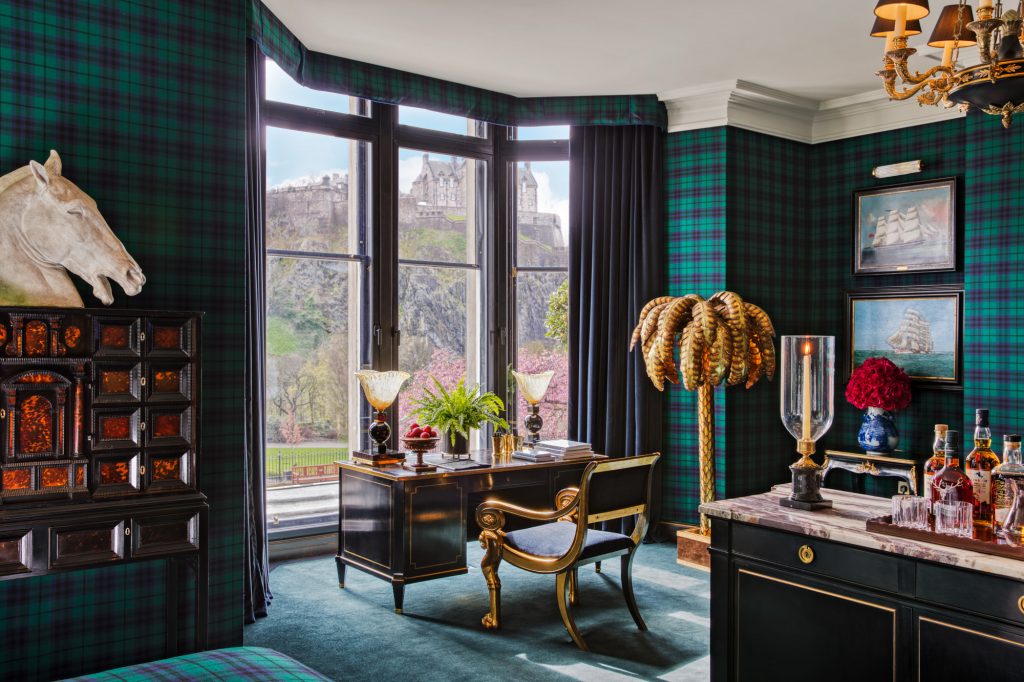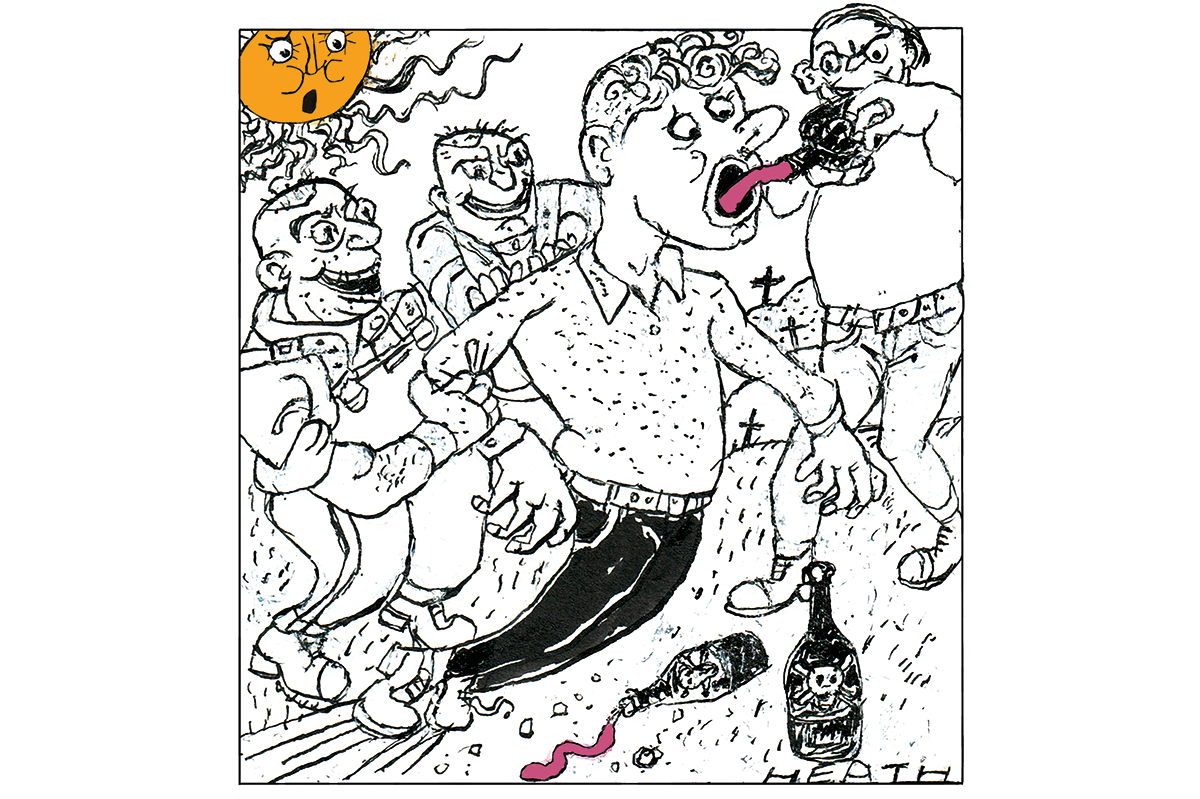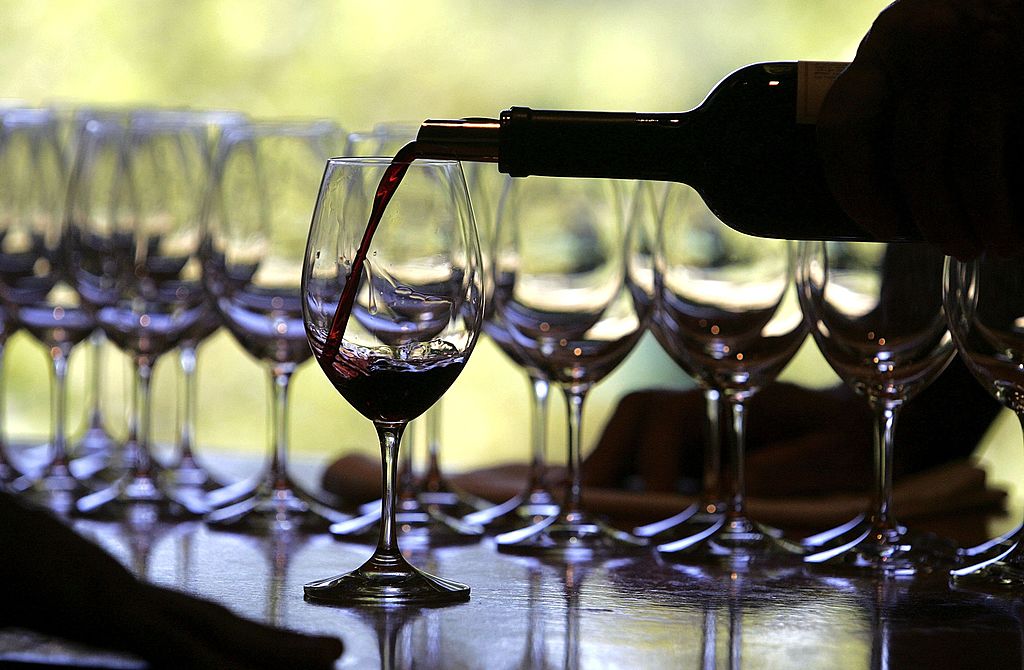It’s 1951 and the Hotel Monteleone burns bright, a gilded island of light and liquor adrift in the New Orleans dark. Inside, the air is thick with the sweet tang of cigar smoke and the murmurs of polished conversation. Over in the Swan Room, the trumpets blare, their brassy notes cutting through the gentle chatter, their absence filled with the lively, gravelly voice of Louis Prima. The crowd sways in rhythm, caught between the pulse of jazz and the flicker of chandelier light. Outside, the French Quarter is still alive.
Just past midnight, when the music slows and Prima’s voice fades, the bohemians and moguls make their way across the marble lobby, joining a constellation of luminaries at the famously spinning Carousel Bar, a slowly rotating marvel of carved wood and hand-painted art. Truman Capote, Tennessee Williams, Ernest Hemingway and William Faulkner all visit with some regularity. Some, like Hemingway and Williams, use it like a muse to bolster their art. Club acts like Prima, Etta James, later even Liberace, end their Swan Room sets with a drink here.
Visitors might come for inspiration or for the slow, soothing spin of twenty-five hand-painted stools, perched atop 2,000 ball bearings that carry them in gentle circles once every quarter-hour around the mahogany bar center. But they stay for the man behind the bar top. There, Walter Bergeron greets them with a nod and a smile — he’s been here longer than the carousel itself, a fixture as beloved and unchanging as the room’s soft, ambient glow. They call him the Grasshopper, for his wiry build and restless energy, a name that would later be immortalized in a cocktail of his creation.
The Carousel Bar is New Orleans — opulent but grounded, playful yet deeply elegant. Just tasteful enough to avoid feeling garish. Its main attraction? Not the minty Grasshopper, but the Vieux Carré: Bergeron’s true masterstroke.
Named after the French Quarter’s original moniker, the Vieux Carré is a love letter to the tangled, intoxicating spirit of New Orleans. It is a perfect blend of cultures: rye whiskey, cognac, Bénédictine, vermouth and Peychaud bitters… American, French, Italian and Caribbean all in one glass. The bitters, the work of Creole apothecary Antoine Peychaud, give the drink an herbal tang and would have been created just blocks and a full century from where Bergeron’s cocktail came to life.
The drink’s genesis remains shrouded in a bit of mystery, and for good reason — many of New Orleans’s historic bars would love to claim the Vieux Carré as their own. But the truth is murkier. More likely, the cocktail was born behind closed doors during Prohibition, when Bergeron was cutting his teeth as an apprentice at the famed Sazerac Coffee House, one of the world’s first cocktail bars. Nonetheless, Bergeron brought the concoction with him to his next stop at the Roosevelt Hotel, and again when he was tapped to head the Hotel Monteleone bars in 1937, eventually opening the Carousel in 1949, where the drink would become famous.
Unlike its classic counterparts, the Vieux Carré isn’t content to be just another whiskey drink — it’s something more intriguing. Each ingredient plays its own distinct role: the rye whiskey brings a spicy backbone, sharp and assertive. Cognac adds velvet, mellowing the sharp edges while vermouth brings bitter with a warm, wine-like depth. But it is the Bénédictine, a herbaceous liqueur with hints of honey, spices and botanicals, that lifts the drink to its place in the list of “unforgettables” in the bartending guides. It would be immortalized even back then, in Stanley Clisby Arthur’s seminal 1937 cocktail guide, Famous New Orleans Drinks and How to Mix ’Em. Arthur explains the drink as an homage to “the part of Orleans where the antique shops and iron lace balconies give sightseers a glimpse into the romance of another day.”
If the Vieux Carré sounds like an unlikely mix, a concoction that confuses the palate, it is. That’s what makes it great. Like the best of creole Jazz, you don’t know what to pay attention to: the piano melody, the trombone’s counter, the backbeat or the trumpet solo.
So, as you sip, whether perched on a painted stool at the Carousel Bar or in the quiet of your own home, let the Vieux Carré carry you back. Back to the smoky glow of the Monteleone, where Louis Prima’s voice still lingers, mingling with the laughter of strangers who might’ve been Etta James or Ernest Hemingway on any given night. As we push into fall, we’ll look for reminders of summer’s heat — a touch of sweetness, a hint of brightness — but we welcome the richness of fall, its deeper, darker notes. We’ll need that cocktail that grabs at a bit of everything: we’ll need Vieux Carré.
Recipe
The Vieux Carré
½ oz Bénédictine liqueur
½ oz cognac
½ oz rye whiskey
½ oz sweet vermouth
1 dash Angostura bitters
1 dash Peychaud’s bitters
1 lemon zest strip
In a chilled old-fashioned glass filled with ice, stir together the Bénédictine, cognac, rye, vermouth and bitters. Garnish with the lemon strip.
This article was originally published in The Spectator’s November 2024 World edition.























Leave a Reply